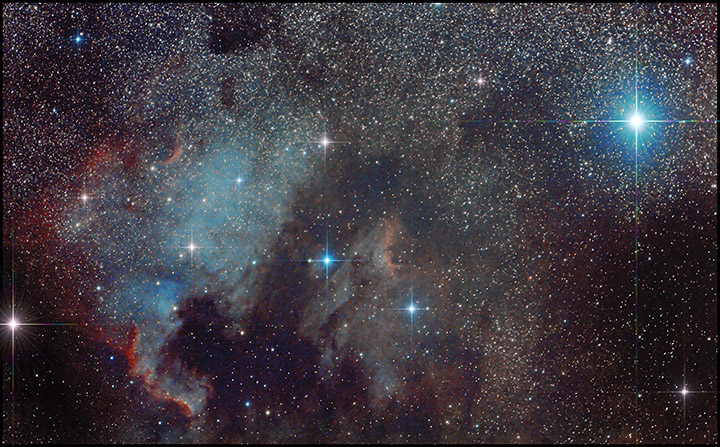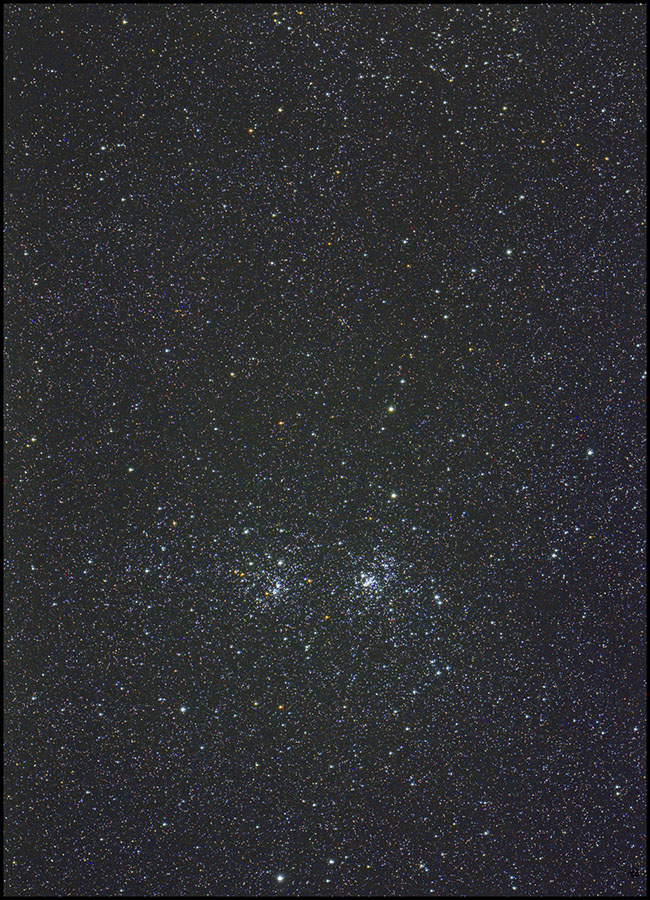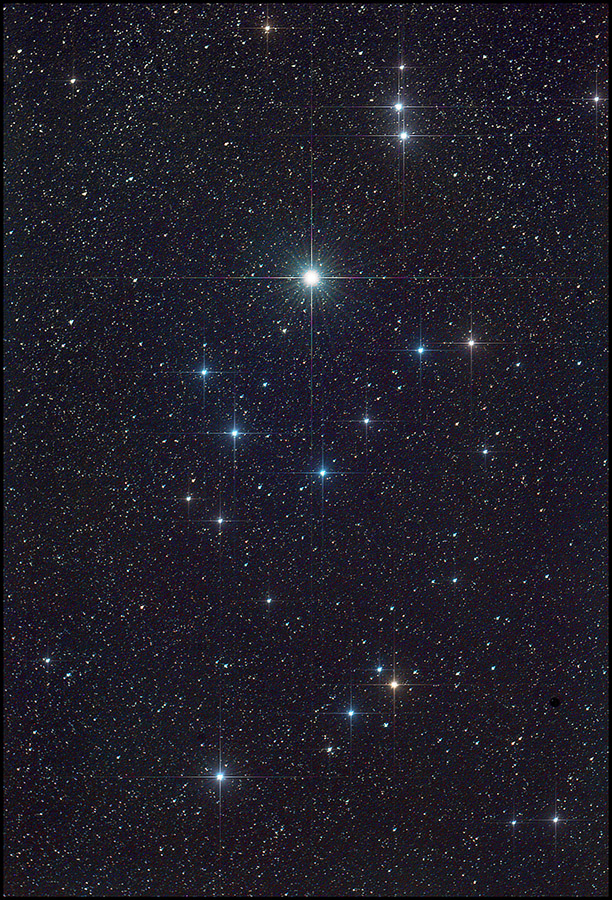I can see my house!
9/16/2015. The North America Nebula works out especiially well in the AT65EDQ with the full-frame Canon 6D. Deneb and the nebula fit in a single frame. This needs more exposure or darker skies (what doesn't?), so I've had some fun with "distraction spikes" to liven up the data from last night.

NGC 7000 and Deneb
AT65EDQ, Canon 6D @ ISO 1600
G11, PHD guiding
50 x 180s (2h30m)
(Click the image for a bigger version)
Given a cleaner, deeper image (or maybe some H-a data to layer under the interesting parts), I'll knock off the "Star Spikes" shenanigans, but in the meantime, this is neat. The colors are as real as they can be in a subject too faint for the eyes to really operate: the same camera sees roses as red, grass as green, the clear daytime sky as blue. There's no Hubble palette remapping or other wierd stuff going on with the color.

The Double Cluster in Perseus
20 x 180s (1 hour)
Same hardware as above.
(Click the image to enlarge.)
There's a much deeper image on the next page.
Once again, I am impressed that a dark nebula probably lies just west of the Double Cluster, but it's going to take appreciably more exposure to bring it out. The absence of stars and the reddening of stars near the edge of the vacancy both suggest that there's something there to be imaged. The view above is moderately cropped (for composition and bandwidth). The scattered, fainter stars of Stock 2 are along the upper edge.
Here's one more folly from the first three clear nights of autumn: the Alpha Persei association. It's a wide field of brilliant young stars in the next spiral arm out from the center of the Milky Way, and it just fits in binoculars or in the AT65EDQ backed by a full-frame 35mm detector:

The Alpha Persei Association
10 x 180s (30 min)
Same hardware.
(Click the image for a clearer view.)
This time, I'm not covering up problems with the Star Spikes software: I just want to emphasize the color of the stars of the Association, and this is as good a way as any (and a better way than most) to do it in post-processing.
Except where noted, deep-sky photos are made with an SBIG ST2000XM CCD behind a 10-inch Astro-Tech Ritchey-Chretien carried on an Astro-Physics Mach1GTO. The CCD is equipped with Baader wide- and narrow-band filters. The internal guide chip of the CCD most often keeps the OTA pointed in the right direction (I'll let you know when an OAG or guidescope takes its place). Camera control and guiding are handled by Maxim DL 5.12. The stock focuser on the AT10RC has been augmented with Robofocus 3.0.9 using adapters turned on the lathe downstairs. A Canon 6D and a modded 50D find themselves mounted on an Orion 10" F4 Newtonian or carrying widefield glass on an iOptron Skytracker. Beginning in May 2013, PixInsight has taken over more and more of the heavy lifting -- alignment, stacking, gradient removal, noise-reduction, transfer function modification, color calibration, and deconvolution. Photoshop CS4 et seq and the Focus Magic plugin get their licks in, too.
:: top ::